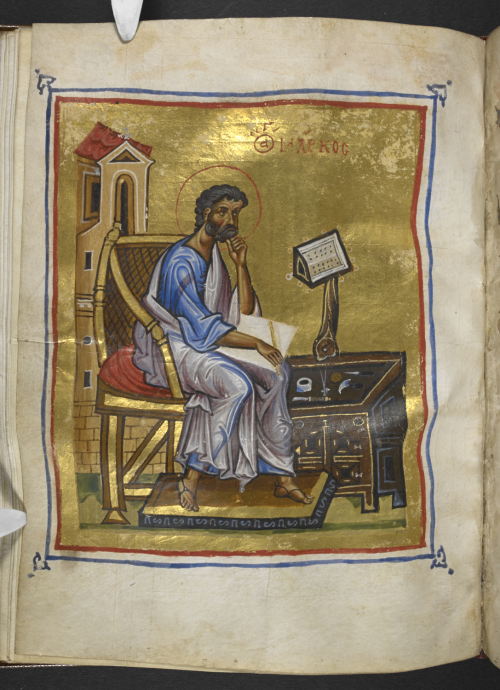medievalpoc:The British Library Medieval Manuscripts blog recently posted about a 12th century Greek
medievalpoc:The British Library Medieval Manuscripts blog recently posted about a 12th century Greek manuscript that had been acquired by Baron Robert Curzon in the 19th Century. (Add MS 39591)The top two images are the original 12th century illustrations for Saint Mark (left) and Saint Matthew (right). The bottom two are illustrations that were painted over in the 19th century by an artist commissioned by Curzon, showing Saint Mark (left) and Saint Luke (right).There is a noticeable difference in the original images versus the later one in both quality and aesthetic. The 19th Century paintings are less detailed and sharp, and demonstrate something I’ve talked about before: art and history are not a linear progression from “worse” to “better”, nor a progression from “less” to “more” realistic.The bottom two images also chow a change in the appearance of the Saints based in a more Victorian ideal: noticeably lighter skin, smaller faces, smoother countenance, and their draped clothing is more concealing of the figure underneath. Now, we might consider it immoral to change artworks from history to reflect what we want or expect to see, wouldn’t we? But seeing these changes should also shape our expectations when we engage with works from 19th century Europe, and what we read written about earlier works that date from the 19th century. Works of art from hundreds of years ago don’t always come to us untouched by the centuries that come between us. The way we see these works is also affected by the world that exists around us now. I think that by being more mindful of the context we tend to view medieval artworks in, we can see them in new and exciting ways that spark a lot of conversations about life and media being created today. -- source link
Tumblr Blog : medievalpoc.tumblr.com
#medieval#important#history#manuscript



